- No products in the cart.
Sumamed tab n / 125mg film on 6 pieces
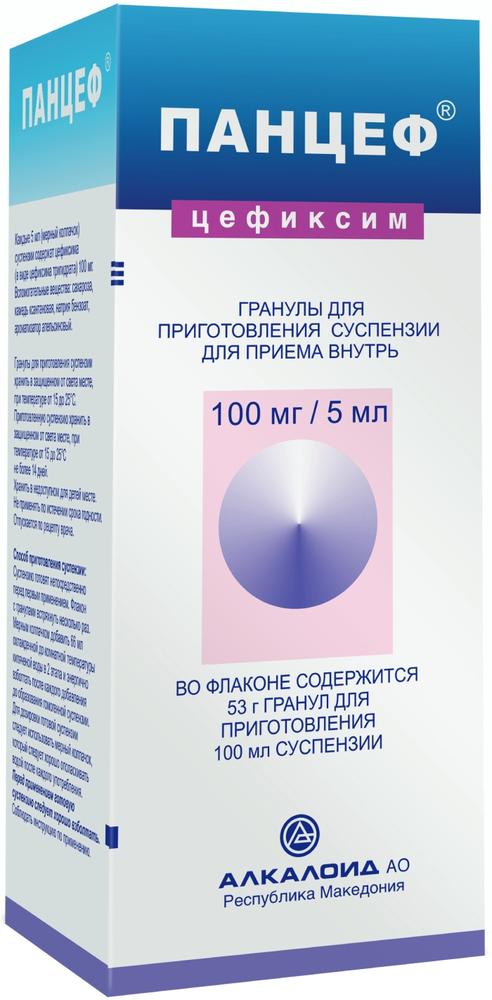
Pantsef prig.suspenzii granules for oral 53g 100mg / 5ml 100ml alkaloid
$14.93
Chloramphenicol 250mg tab 10 pc
$0.52
$7.09
Sumamed tab n / 125mg film on 6 pieces
SKU: 1296373222 Categories: Antibiotics, Antibiotics, antimicrobial, antiparasitic, Medicaments Tags: azithromycin, TEVA
Description
Composition
Active substance:
Azithromycin dihydrate 131.027 mg 1), respectively, based on 125.00 mg azithromycin
Excipients:
Calcium hydrogenphosphate anhydrous 29.873 mg 2) hypromellose 1.500 mg corn starch 12.000 mg
pregelatinized starch 12.000 mg microcrystalline cellulose 10.000 mg, 0.600 mg sodium lauryl sulfate, magnesium stearate, 3.000 mg;
sheath: 3.400 mg of hypromellose, indigo dye varnish (E132) 0,100mg, titanium dioxide (E171) 0.560 mg, 0.140 mg of polysorbate 80, talk2,800 mg.
1) – the number of theoretical activity indicated rate of azithromycin 95.4%
2) – the amount of calcium hydrogen phosphate anhydrous can vary depending on the actual activity of azithromycin
Description:
Round, biconvex tablets blue, engraved «PLIVA» – one, and “125” on the other side.
Product form:
Tablets, film-coated 125 mg
6 tablets in blister PVC / aluminum foil.
1 blister together with instructions for use in a cardboard box
Contraindications
Hypersensitivity to azithromycin, erythromycin, or other macrolides ketol-dam, or other components of the formulation; abnormal liver function severe; Children under 12 years of age with a body weight less than 45 kg (500 mg tablet); Children under the age of three years (for 125 mg tablets); concomitant use with ergotamine and dihydroergotamine.
Carefully
myasthenia gravis; liver dysfunction and mild to moderate severity; Terminal renal failure with GFR (glomerular filtration rate) of less than 10 ml / min; patients with presence proaritmogennoe factors (especially in the elderly): with congenital or acquired lengthening the interval QT, in patients receiving antiarrhythmic drug therapy class IA (quinidine, procainamide), III (dofetilide, amiodarone and sotalol), cisapride, terfenadine, antipsychotic drugs (pimozide), antidepressants (citalopram), fluoroquinolones (moxifloxacin and levofloxacin), impaired with fluid and electrolyte balance, particularly in the case of hypokalemia or hypomagnesemia with clinically significant bradycardia iey, cardiac arrhythmia or severe heart failure; concurrent use of digoxin, warfarin, cyclosporine.
Dosage
125 mg
Indications
Infectious-inflammatory diseases caused by susceptible to malaria infections:
– Upper respiratory tract infection and upper respiratory organs (pharyngitis / tonsillitis, sinusitis, otitis media);
– Lower respiratory infections, acute bronchitis, exacerbation of chronic bronchitis, pneumonia, including caused by atypical pathogens;
– skin and soft tissue infections (acne vulgaris moderate, erysipelas, impetigo, secondarily infected dermatoses);
– The initial stage of Lyme disease (borreliosis) – erythema migrans (erythema migrans);
– urinary tract infections caused by Chlamydia trachomatis (urethritis, cervicitis).
Interaction with other drugs
antacids
Antacids do not affect the bioavailability of azithromycin, but reduce the maximum blood concentration of 30%, and the drug should be taken at least one hour before or two hours after taking these drugs and food.
cetirizine
Simultaneous application for 5 days in healthy volunteers azithromycin with cetirizine (20 mg) did not result in a substantial pharmacokinetic interaction and change interval QT.
DdI (dideoxyinosine)
The simultaneous use of azithromycin (1200 mg / day) and didanosine (400 mg / day) in 6 HIV patients showed no evidence of didanosine pharmacokinetic changes compared to the placebo group.
Digoxin (P-glycoprotein substrates)
The simultaneous use of macrolide antibiotics, including azithromycin with substrates of P-glycoprotein, such as digoxin, increases the concentration of substrate of P-glycoprotein in serum. Thus, while the use of azithromycin and digoxin must consider the possibility of increasing the concentration of digoxin in the serum.
zidovudine
The simultaneous use of azithromycin (1000 mg single dose and multiple dose of 1200 mg or 600 mg) had little effect on the pharmacokinetics, including the renal excretion of zidovudine or its glucuronide metabolite. However, the use of azithromycin caused an increase in the concentration of phosphorylated AZT, clinically active metabolite in peripheral blood mononuclear cells.
The clinical significance of this is unclear.
Azithromycin weakly interacts with the cytochrome P450 isozymes system. Not found that azithromycin is involved in pharmacokinetic interactions similar to erythromycin and other macrolides. Azithromycin is not an inhibitor and inducer of cytochrome P450 isoenzymes.
ergot alkaloids
Given the theoretical possibility of ergotism, the simultaneous use of azithromycin derivatives of ergot alkaloids is not recommended.
Pharmacokinetic studies were conducted simultaneously azithromycin and preparations which metabolism occurs with the participation of cytochrome P450 isoenzymes.
atorvastatin
Simultaneous use of atorvastatin (10 mg daily) and azithromycin (500 mg daily) did not cause changes atorvastatin concentrations in plasma (based inhibition assay MMC-CoA reductase). However, in the post-registration period, some were reported cases of rhabdomyolysis in patients receiving both azithromycin and statins.
carbamazepine
In pharmacokinetic studies in healthy volunteers revealed no significant effect on the concentration of carbamazepine and its active metabolite in the blood plasma of patients treated with azithromycin at the same time.
cimetidine
The pharmacokinetic studies influence of single dose azithromycin pharmacokinetics cimetidine revealed no changes in the pharmacokinetics of azithromycin, cimetidine, subject to application of 2 hours prior to the azithromycin.
Indirect anticoagulants (coumarin derivatives)
In pharmacokinetic studies of azithromycin had no effect on the anticoagulant effect of a single dose of 15 mg of warfarin in healthy volunteers received. It has been reported to potentiate the anticoagulant effect after simultaneous application of azithromycin and indirect anticoagulants (coumarin derivatives). Despite the fact that a causal link has not been established, it is necessary to take into account the need for frequent monitoring of prothrombin time when azithromycin in patients
receiving oral anticoagulants indirect (coumarin derivatives).
cyclosporine
In a pharmacokinetic study in healthy volunteers during
3 days ingested azithromycin (500 mg / day one), and then the cyclosporin (10
mg / kg / day once) revealed a significant increase in the maximum plasma concentration (Cmax) and area under the curve “concentration-time» (AUC0-5) cyclosporin.
Caution must be exercised while the use of these drugs. If necessary, the simultaneous use of these drugs, it is necessary to monitor the concentration of cyclosporine in the blood plasma and adjust the dose.
efavirenz
The simultaneous use of azithromycin (600 mg / day one) and efavirenz (400 mg / day)
daily for 7 days did not cause any clinically significant pharmacokinetic interaction.
fluconazole
The simultaneous use of azithromycin (1200 mg single dose) did not alter the pharmacokinetics of fluconazole (800 mg dose). Total exposure and half-life of azithromycin is not changed while the application of fluconazole, however, the observed reduction in Cmax of azithromycin (18%), which had no clinical significance.
indinavir
The simultaneous use of azithromycin (1200 mg single dose) caused no statistically significant effect on the pharmacokinetics of indinavir (800 mg tid for
5 days).
methylprednisolone
Azithromycin has no significant effect on the pharmacokinetics of methylprednisolone.
nelfinavir
The simultaneous use of azithromycin (1200 mg) and nelfinavir (750 mg 3 times daily)
It causes an increase in the equilibrium concentrations in the serum azithromycin.
No clinically significant side effects were observed and correction dose of azithromycin when applied simultaneously with nelfinavir not required.
rifabutin
The simultaneous use of azithromycin and rifabutin did not affect the concentration of each of the drugs in serum. With simultaneous use of azithromycin and rifabutin sometimes observed neutropenia. Despite the fact that neutropenia associated with the use of rifabutin, a causal relationship between the use of a combination of azithromycin and rifabutin and neutropenia has not been established.
sildenafil
When applied in healthy volunteers received no evidence for an effect of azithromycin (500 mg / day, daily for 3 days) on the AUC and Cmax of sildenafil or its main circulating metabolite.
terfenadine
The pharmacokinetic studies have not shown evidence of interaction between azithromycin and terfenadine. It reported a few cases, when the possibility of such an interaction could not be excluded completely, but there was no specific evidence that such an interaction has taken place.
It has been found that the simultaneous use of terfenadine and macrolides can cause arrhythmia and lengthening the interval QT.
theophylline
Revealed no interaction between azithromycin and theophylline.
Triazolam / midazolam
Significant changes pharmacokinetic parameters, while the application of azithromycin with midazolam or triazolam in therapeutic doses have been identified.
Trimethoprim / sulfamethoxazole
The simultaneous use of trimethoprim / sulfamethoxazole with azithromycin showed no significant effect on the Cmax, the overall exposure or excretion by the kidneys trimethoprim or sulfamethoxazole. Serum concentration of azithromycin corresponded detectable in other studies.
Overdose
Symptoms: temporary hearing loss, nausea, vomiting, diarrhea.
Treatment: symptomatic.
pharmachologic effect
Pharmacodynamics:
Azithromycin – bacteriostatic antibiotic with broad-spectrum macrolide-azalides. It has a broad spectrum of antimicrobial action. The mechanism of action of azithromycin is associated with suppression of the synthesis of microbial cell protein. Communicating with the 50S-ribosome cybedinitsey inhibits peptidtranslokazu step of broadcasting and inhibits protein synthesis by slowing growth and reproduction of bacteria. In high concentrations it has a bactericidal effect.
It has activity against a number of Gram-positive, Gram-negative, anaerobic, intracellular and other organisms.
Microorganisms can initially be resistant to the antibiotic, or may acquire resistance to it.
Scale sensitivity of microorganisms to azithromycin (Minimum Inhibitory Concentration (MIC) in mg / l):
Microorganism MIC, mg / l
sensitive Stable
1. Staphylococcus 2
2. Streptococcus
A, B, C, G 0,5
3. S. pneumoniae 0.5
4. H. influenzae 4
5. M. catarrhalis 0.5
6. N. gonorrhoeae 0.5
In most cases sensitive microorganisms
1. Gram-positive aerobes Staphylococcus aureus methicillin-sensitive Streptococcus pneumoniae penicillin-sensitive Streptococcus pyogenes
2. Gram-negative aerobic Haemophilus influenzae
Haemophilus parainfluenzae
Legionella pneumophila
Moraxella catarrhalis
Pasteurella multocida
Neisseria gonorrhoeae
3. anaerobes Clostridium perfringens
Fusobacterium spp.
Prevotella spp.
Porphyriomonas spp.
4. Other microorganisms Chlamydia trachomatis
chlamydia pneumoniae
chlamydia psittaci
Mycoplasma pneumoniae
Mycoplasma hominis
Borrelia burgdorferi
Microorganisms capable of developing resistance to azithromycin
Gram-positive aerobes Streptococcus pneumoniae penicillin-resistant
Initially resistant microorganisms
Gram-positive aerobes Enterococcus faecalis
Staphylococci (methicillin-resistant staphylococci very high frequency have acquired resistance to macrolides)
Gram-positive bacteria resistant to erythromycin.
Anaerobes Bacteroides fragilis
Pharmacokinetics:
After oral administration, azithromycin is well absorbed and rapidly distributed in the body. After a single dose of 500 mg bioavailability – 37% (the effect of “first pass”), maximum concentration (0.4 mg / l) in the blood generated after 2-3 hours, the apparent volume of distribution – 31,1 l / kg, protein binding It is inversely proportional to the concentration in the blood and is 7-50%. Penetrates through the cell membrane (effective against infections caused by intracellular pathogens).
Phagocytes transported to the site of infection, where the presence of released bacteria. Easily passes blood-tissue barriers and into the tissue. Concentration in the tissues and cells in a 10-50 times higher than in plasma, and the source of infection – by 24-34% higher than in healthy tissues.
We azithromycin very long half-life – 35-50 hour period of tissue half-life is significantly longer.. Therapeutic concentrations of azithromycin remains until 5-7 days after the last dose. Azithromycin is derived mainly as unchanged – 50% of the intestines, the kidneys of 6%. The liver is demethylated, losing activity.
Pregnancy and breast-feeding
Pregnancy and lactation are used only if the expected benefit to the mother outweighs the potential risk to the fetus and child. If necessary, use during breastfeeding recommended suspend breastfeeding.
Conditions of supply of pharmacies
Prescription.
side effects
The frequency of side effects is classified in accordance with the recommendations of the World Health Organization: very often – at least 10%; often – at least 1% but less than 10%;
infrequently – at least 0.1% but less than 1%; rarely – at least 0.01% but less than 0.1%; very rarely –
less than 0.01%; unknown frequency – can not be estimated from available data.
Infectious diseases: infrequently – candidiasis, including the oral mucosa,
vaginal infection, pneumonia, fungal infection, bacterial infection, pharyngitis,
gastroenteritis, respiratory infections, rhinitis; unknown frequency – pseudomembranous colitis.
From the blood and lymphatic system: rarely – leukopenia, neutropenia, eosinophilia; very rarely – thrombocytopenia, hemolytic anemia.
On the part of metabolism and nutrition: rarely – anorexia.
Allergic reactions: infrequently – angioneurotic edema, hypersensitivity reactions;
unknown frequency – an anaphylactic reaction.
From the nervous system: often – headache; rarely – dizziness, dysgeusia, paraesthesia, somnolence, insomnia, nervousness; seldom – agitation;
unknown frequency – hypoesthesia, anxiety, aggression, fainting, seizures, psychomotor hyperactivity, loss of smell, sense of smell distortion, loss of taste, myasthenia gravis, delirium, hallucinations.
On the part of the organ of vision: rarely – visual impairment.
On the part of the ear and labyrinth disorders: rarely – a disorder of hearing, vertigo;
unknown frequency – hearing impairment, including deafness and / or tinnitus.
Cardio-vascular system: rarely – palpitations, “tides”
blood to the face; unknown frequency – low blood pressure, increased QT interval in the electrocardiogram, arrhythmia type “pirouette”, ventricular tachycardia.
The respiratory system: rarely – shortness of breath, nasal bleeding.
Gastro-intestinal tract: often – diarrhea; often – nausea, vomiting,
abdominal pain; infrequently – flatulence, dyspepsia, constipation, gastritis, dysphagia, abdominal distension,
dryness of the oral mucosa, belching, ulcers of the oral mucosa,
increased secretion of salivary glands; very rarely – to change the language of color, pancreatitis.
Of the liver and biliary tract: rarely – hepatitis; rarely – liver dysfunction, cholestatic jaundice; unknown frequency – hepatic failure (in rare cases – fatal, mostly against the background of human liver severe); necrosis of the liver, fulminant hepatitis.
Skin and subcutaneous tissue disorders: rare – skin rash, itching, hives, dermatitis,
dry skin, sweating; rarely – photosensitivity reactions; unknown frequency –
Stevens-Johnson syndrome, toxic epidermal necrolysis, erythema multiforme, drug rash with eosinophilia and systemic symptoms (DRESS-syndrome).
On the part of the musculoskeletal system: rarely – osteoarthritis, myalgia, back pain,
pain in the neck; unknown frequency – arthralgia.
On the part of the kidney and urinary tract: rarely – dysuria, pain in the kidneys;
unknown frequency – interstitial nephritis, acute renal failure.
On the part of genitals and mammary gland: Infrequent – metrorrhagia, impaired testicular function.
Other: rarely – edema, asthenia, malaise, fatigue, swelling of the face, chest pain,
fever, peripheral edema.
Laboratory data: often – a reduction in the number of lymphocytes, increase in the number of eosinophils, basophils increase in the number, increase in the number of monocytes,
increase in the number of neutrophils, decreased bicarbonate concentration in the blood plasma;
infrequently – raising activity of aspartate aminotransferase, alanine aminotransferase,
increasing the concentration of bilirubin in blood plasma, increasing concentrations of urea in plasma creatinine concentration in blood plasma, a change of potassium content in the blood plasma, increased alkaline phosphatase activity in plasma,
increase in chloride content in the blood plasma, increasing the concentration of glucose in the blood,
increasing the number of platelets, decreased hematocrit, increasing bicarbonate concentration in the blood plasma, a change in the sodium content in the blood plasma.
special instructions
When you miss a single dose of the drug Sumamed® missed dose should be taken as soon as possible, and follow – with breaks in 24 hours.
Sumamed® formulation should be taken at least one hour before or two hours after ingestion of antacids.
Sumamed® drug should be used with caution in patients with impaired liver function and mild to moderate severity due to the possibility of development of fulminant hepatitis and liver failure, severe.
If abnormal liver function: If you have liver disease symptoms, such as fast growing fatigue, jaundice, dark urine, bleeding tendency, hepatic encephalopathy, – therapy with Sumamed® should stop and study the functional state of the liver.
When renal impairment: Patients with GFR 10-80 ml / min the dose correction is not required.
As with other antibacterial drugs in the treatment of drug
Sumamed® should regularly examine patients for the presence of non-susceptible organisms and signs of superinfection, including fungi.
Sumamed® The drug should not be used longer course than indicated in the instructions, as the pharmacokinetic properties of azithromycin can recommend short and simple dosing regimen.
No data on the possible interaction between azithromycin and derivatives of ergotamine and dihydroergotamine, but due to the development of ergotism, while the use of macrolides derivatives with ergotamine and dihydroergotamine, this combination is not recommended.
Chronic administration of the drug may develop Sumamed® pseudomembranous colitis caused by Clostridium difficile, both in the form of mild diarrhea to severe colitis. With the development of antibiotic-associated diarrhea in patients receiving the drug Sumamed® and 2 months after completion of therapy should be excluded clostridial pseudomembranous colitis. Drugs which inhibit peristalsis are contraindicated.
When treating with macrolides, including azithromycin, there was a prolongation of cardiac repolarization and the interval QT, increase the risk of cardiac arrhythmias, including arrhythmia type “pirouette”.
Caution must be exercised when applying Sumamed® drug in patients with the presence proaritmogennoe factors (especially in the elderly), including those with congenital or acquired elongation interval QT; in patients taking antiarrhythmic drugs class IA (quinidine, procainamide), III (dofetilide, amiodarone and sotalol), cisapride, terfenadine, antipsychotics (pimozide), antidepressants (citalopram), fluoroquinolones (moxifloxacin and levofloxacin), patients with impaired water -elektrolitnogo balance, especially in the case of hypokalemia or hypomagnesemia, clinically significant bradycardia, cardiac arrhythmia or severe heart failure.
Application Sumamed® drug can trigger the development of myasthenic syndrome or aggravate myasthenia gravis.
Effect on the ability to drive mechanisms and
With the development of adverse effects in the nervous system and organ of vision care should be taken while performing activities that require high concentration and psychomotor speed reactions.
Storage conditions
Store at a temperature not higher than 25 ° C.
Keep out of the reach of children.
Dosing and Administration
Bnutr not liquid, at least for 1 hour before or 2 hours after a meal, 1 times a day.
Adults and children over 12 years weighing more than 45 kg
With infections of the upper and lower respiratory tract infections, upper respiratory tract, skin and soft tissue:
1 tablet (500 mg), 1 time per day for 3 days (a course dose 1.5 g).
If acne vulgaris medium severity: 1 tablet (500 mg), 1 daily for
3 days, followed by 1 tablet (500 mg), 1 time per week for 9 weeks (course dose 6.0 g).
The first pill to be taken weekly after 7 days after the first pill daily (day 8 from the start of treatment), the next 8 weekly tablets –
with an interval of 7 days.
When Lyme disease (borreliosis initial stage) – erythema migrans (erythema
migrans): 1 once a day for 5 days: Day 1 – 1.0 g (2 500 mg tablets), then with the 2nd to 5th day – 1 tablet (500 mg) (course dose 3.0 g).
When urinary tract infections caused by Chlamydia trachomatis (urethritis, cervicitis):
uncomplicated urethritis / cervicitis – 1 g (2 500 mg tablets) once.
Children aged 3 to 12 years weighing less than 45 kg
With infections of the upper and lower respiratory tract infections, upper respiratory tract, skin and soft tissue:
rate of 10 mg / 1 kg body weight once a day for 3 days (a course dose 30 mg / kg).
Calculation Sumamed® dose formulation for children weighing less than 45 kg
18-30 kg – 2 tablets (250 mg of azithromycin)
31-44 kg – 3 tablets (375 mg of azithromycin)
not less than 45 kg – used doses recommended for adults
In children under 3 years recommended to use preparations Sumamed®, powder for suspension for oral administration 100 mg / 5 mL and Sumamed® forte, powder for suspension for oral administration 200 mg / 5 ml.
When pharyngitis / tonsillitis caused by Streptococcus pyogenes, Sumamed® drug is used at a dose of 20 mg / kg / day for 3 days (a course dose 60 mg / kg). The maximum daily dose is 500 mg.
When Lyme disease (borreliosis initial stage) – erythema migrans (erythema
migrans): 20 mg / kg 1 time a day for 1 day, then at the rate of 10 mg / kg 1 time a day with 2 to
5th day.
For convenience of use in children course dose 60 mg / kg is recommended that the administration of drugs
Sumamed®, powder for suspension for oral administration 100 mg / 5 mL and Sumamed®
forte, powder for suspension for oral administration 200 mg / 5 ml.
If the kidney function: If the kidney function in patients with GFR 10-80
ml / min the dose correction is not required.
If abnormal liver function: when used in patients with impaired liver function mild or moderate dose adjustment is required.
Elderly patients: No dose adjustment is required. Because elderly people may already have current proaritmogennoe state, caution should be exercised when using the drug Sumamed® due to high risk of cardiac arrhythmias, including arrhythmia type “pirouette”.
Information
Appearance may differ from that depicted in the picture. There are contraindications. You need to read the manual or consult with a specialist
Additional information
| Weight | 0.100 kg |
|---|---|
| Manufacturer | TEVA |

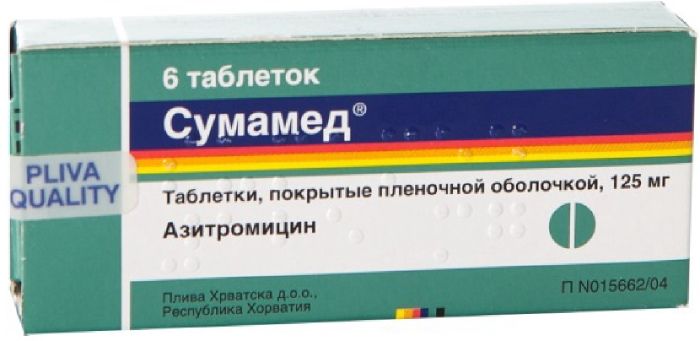
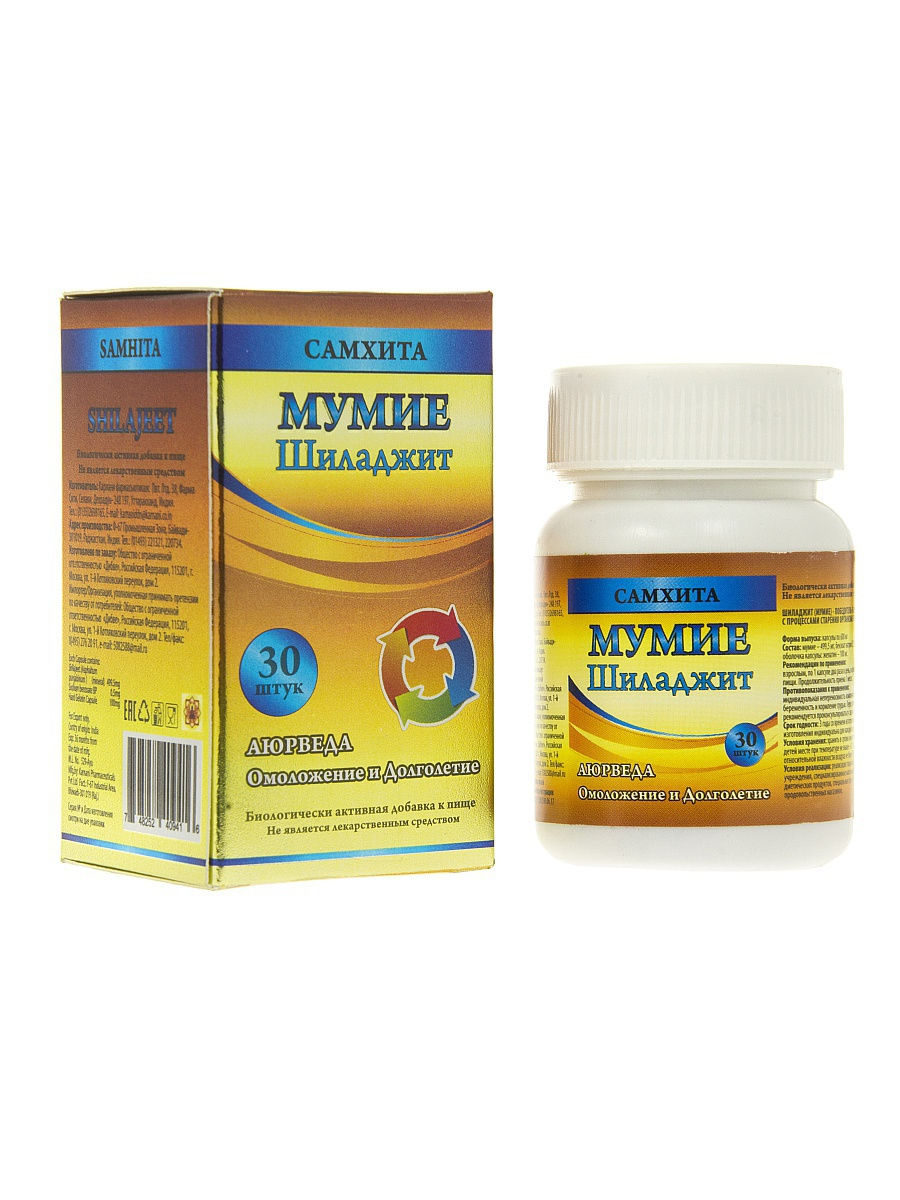
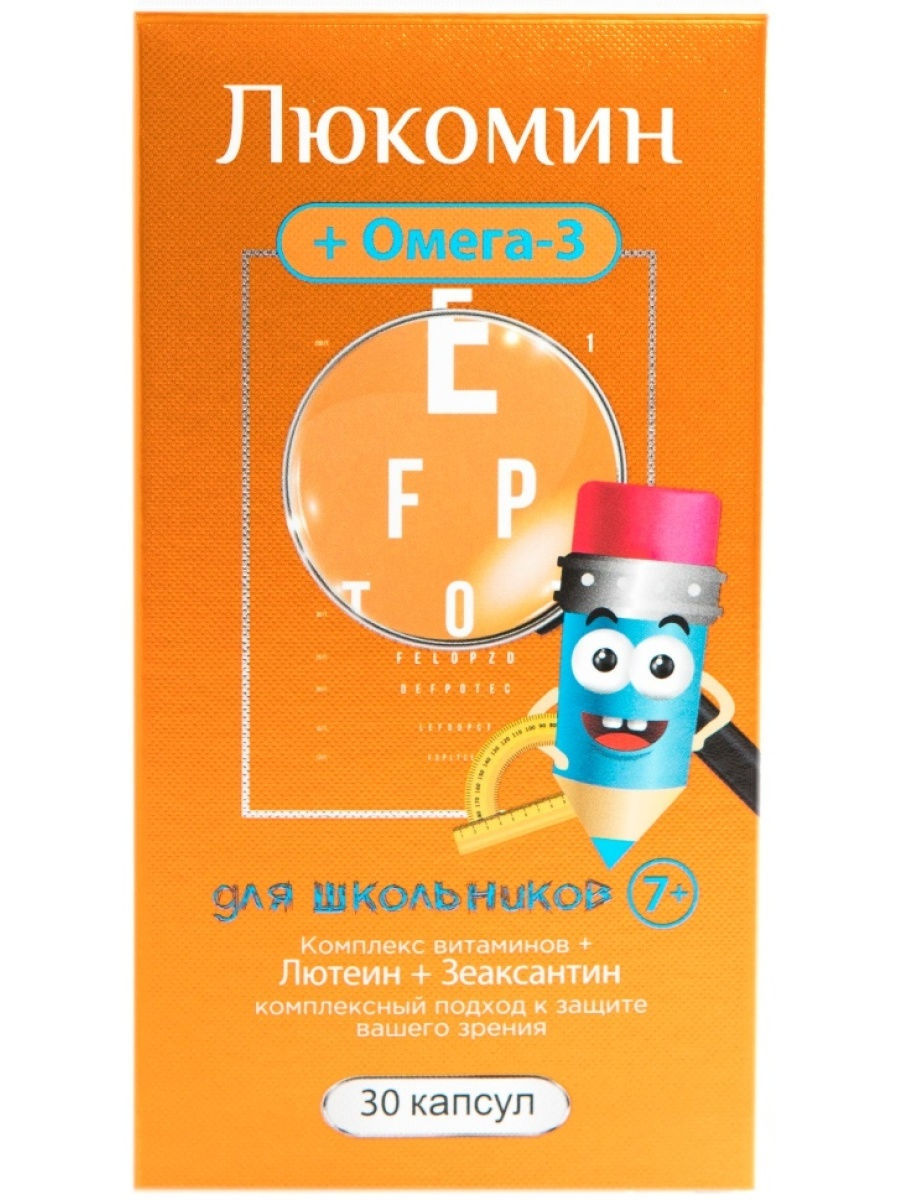
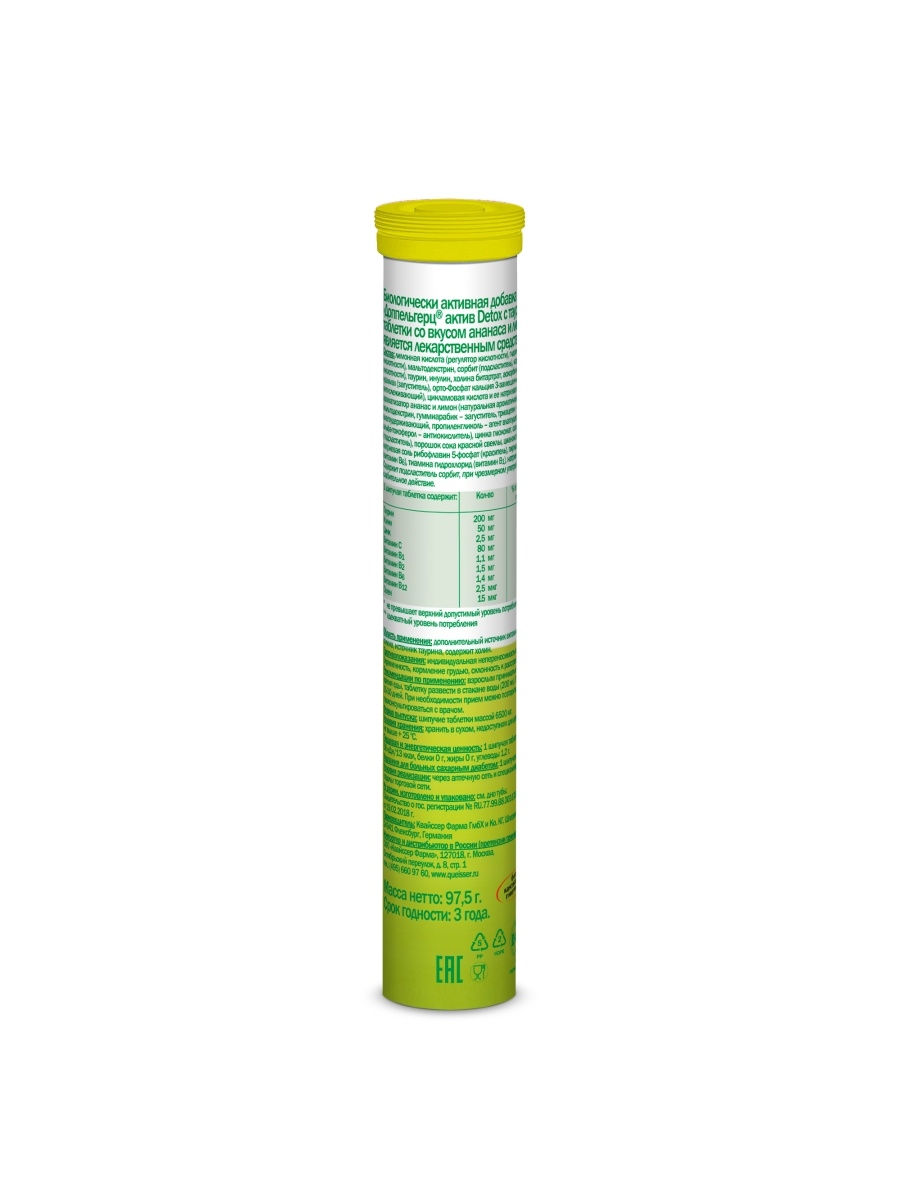






There are no reviews yet.